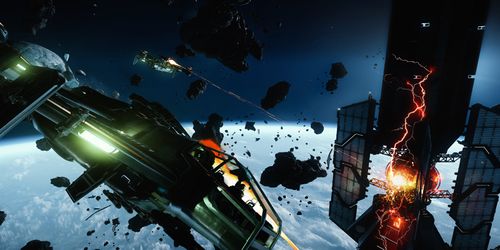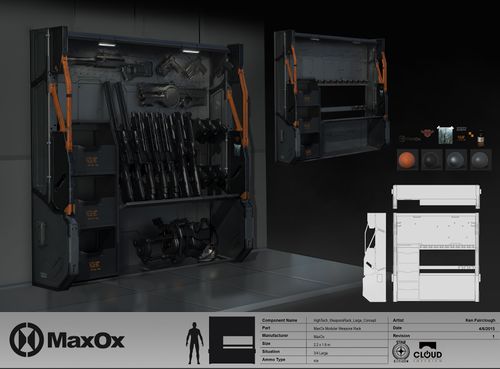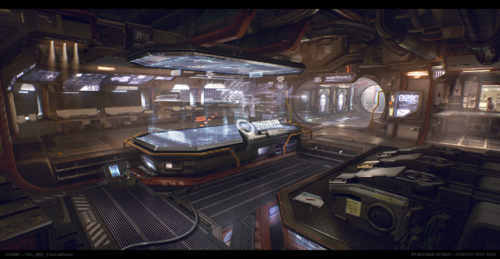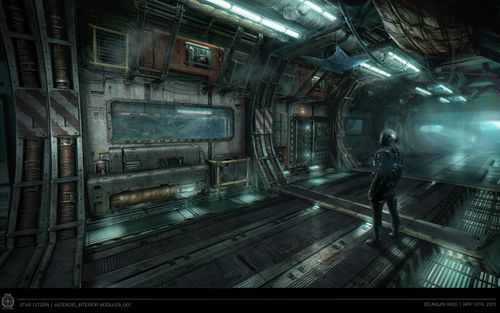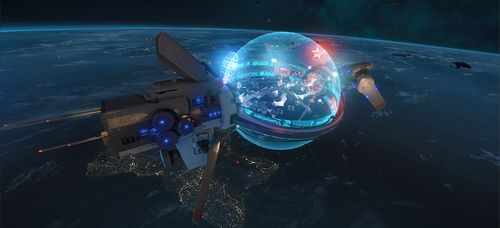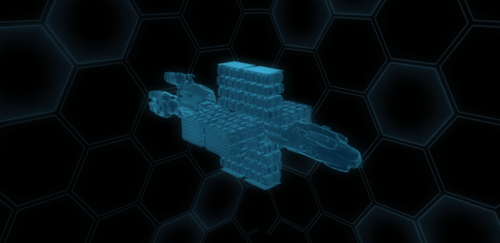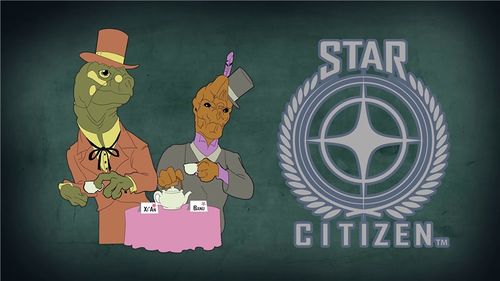Greetings Citizens,
Welcome to the April 2015 Monthly Report! It was a busy month for the Star Citizen team, with the worldwide teams going full speed ahead on updates to Arena Commander, Star Marine, Squadron 42, the persistent universe and more. As we speak, Star Citizen Alpha 1.1.2 is available on the PTU. Thanks to the community, we’ve identified a number of bugs that the team is hard at work squashing today… expect an update on that next week. This is also your last weekend to pledge for a Hull series ship during the concept sale; check it out! We’ll also be putting out a more comprehensive update on Star Marine early next week, letting you know exactly what we’ve been working on these past few weeks. Until then, enjoy finding out what we’ve been up to in April!
CIG SANTA MONICA
Greetings Citizens,
April is over; man, that was fast! We’re trying things a little differently with this month’s report: instead of a single voice, we’ve given each team member the opportunity to contribute directly. And below this report, we’ve added a little background about what one of our artists does. You’ll have to let us know what you think in the comments but we believe it creates a much more dynamic update! Without further ado, let’s go to the department updates written by those who make up the departments.
Design
One of the items we’ve been working on in the Design department is Pirate Swarm is a mode within the map of Broken Moon. It features Pirate pilots using UEE ships that will attack the players. The number of waves has been reduced for play times to be more manageable, waves have been balanced as well to allow players a chance to reach the end. The Swarm modes have been played a bunch over the time since Arena Commander has been released, but we want to give you more than just static waves of the same ones over and over. Moving forward we want to get away from the term of Vanduul or Pirate Swarm and make it just ‘Swarm’.
What does that mean?
We want to give you options in which you can customize your gameplay.
That doesn’t tell me anything!
Hmm, how would you like to choose what enemies you fight? How would you like to select how many waves you want to go up against? Moving forward we really want to give you those types of options. The ability to make your play experience painfully difficult as a true swarm of enemies zero in on you, or if you just want to jump in and test a new weapon set up, then spawn a single easy wave to check it out. This is a simulation, you should have the ability to set up your training simulation as you please, and we aim to give you that option.
GOST is coming! GOST is a modular system we’re developing that allows us to more directly control the varied methods of interacting with our ships. Previously hard-coded archetypes of accessing, entering, sitting within, and navigating throughout ships will instead be authored by situation-specific logical components, granting us greater freedom than ever before. One example of the advantages of this system is that in the Hornet F7CM, instead of being auto-seated in the pilot’s seat, you’ll be able to deploy the access ladder, then choose to retract it, sit in the pilot’s seat, or sit in the copilot seat. Multi-crewed ships will reap even larger functional benefits, especially while dashing from the radar station to the hangar deck in the heat of battle or while simply taking a leisurely stroll to the lounge. Interact with your ships however you’d like—it’s all possible with GOST.
Overall, April has seen a lot of great progress for our long-term itemization in Star Citizen. With the continued work on all of the ship components, we’ve been working on a full overhaul and standardization of all of our component sizes. Having these in place is going to help with all aspects of ship design and development. From the ground up, we can use these sizes to build out much more detailed component plans for each of our ships, as well as starting to help us plan out just what our increased modularity of ship components will mean when putting together a loadout.
Having these sizes locked in, we’ve already started planning out some of the possible component swapping that will be available in the future. Some of our current experiments are exploring Power Plants, Shield Generators, and Cooling systems sharing more interchangeable placement. This is still going to take a lot of testing and tuning to make sure these choices feel meaningful enough to make while also keeping the overall power of each ship balanced.
Another set of components we’ve needed to rethink the sizing on are our Ammo Boxes, Battery Packs, Fuel Tanks, and Ballast systems. With our resized components, these all now share the same size, allowing them to easily be replaced with one another. Running a ballistics-heavy ship? Bring some extra ammo. Need to make a long-range flight next? Swap that ammo out with some spare fuel tanks. While not all of these components are adjustable on a ship currently, they’re going to help play a major part in loadout customization.
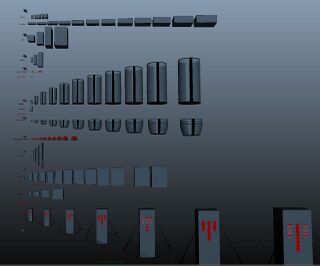
This month we took on tangibility mechanics – what has affectionately been called “grabby hands” – as a vital step towards bringing the cargo system to life. The basic premise is that everything is physical, that human scale objects can be picked up and manipulated, placed and tossed around with a level of fidelity and control that really brings the environment alive. Moving things around is great, and from our early prototypes it feels more natural and responsive than has ever been seen done before, but that’s only the first problem – doing it with animations that flow naturally while remaining responsive for gameplay and visibly correct in both first and third person is a whole extra level of complexity. It’s all pretty well documented here.
For all its challenges, this level of detail and interactivity is the path to a universe that feels real, from seeing a stranger flipping a coin to walking into your hangar and truly feeling at home. It extends beyond just the picking up of items, so I’ve also created early examples of direct interaction with buttons, dials, throttles, even computer screens. Being able to sit in your cockpit and manually pick out individual buttons to press, or directly pulling levers and valves to tweak and tune components for repair, or just walking up to a screen and being able to instantly interact intuitively and naturally without switching into a new mode – these are the things that make the art of Star Citizen tangible.
Engineering
This month we implemented a new 3D-to-2D “point of view” radar in the style of Wing Commander’s radar. Though range can be harder to discern with this radar it makes it very easy to know where your contacts are around you and which way to turn to get them in view. We started by using Wolfram Mathematica to rapidly prototype the math necessary to map a 3D direction onto the display, creating both an interactive output and a test output using a generated array of test points so we could see any mistakes that needed fixing. Once we were sure the math was correct we brought it all into C++ and hooked it up to the flash through a custom dock item field, then attached the flash to the front HUD of an Avenger to test it. This new radar type will be appearing in certain ships soon.
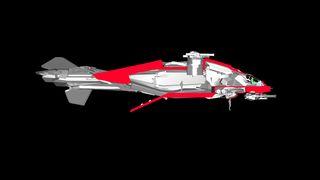
While the AI devs over in the UK have nowadays mostly been working on character-based AI for Squadron 42 and the Persistent Universe, we’ve been focused on the maintenance of spaceship-based AI as you see in the Vanduul Swarm game mode. Most recently, we’ve begun prototyping wingmen commands, the ability for the player to assign specific goals such as “attack my target” or “defend me” to his wingmen instead of just having them engage enemies as they please. This work will also work well towards our ability to create complex combat scenarios and missions in which AI ships will have different objectives to fulfill specific roles in the fleet. In the future, we expect to be working more in supporting Randy Vazquez, an LA technical designer who started working for us in the past couple of months and specifically focuses on AI encounter systems.
Continue bug support on release stream; crashes, mp de-syncs, unexpected behavior, and all around shenanigans. Prep work for radar system 2.0, signature system 2.0, vehicle params, and physical based damage. The improved radar system will be handle designer driven entries, threaded performance improvements, coherent abstraction so player and vehicles can use the same system with adjusted parameters, and more. The improved signature system will extend the designer driven system because calix demands more power, allow signatures to mask other signatures ( sun blocking ir signatures ), introduce the concept of frequency, and expand signature emission profiles. The vehicle params are a important step to reduce load times and allow external system to construct information on how a vehicle could be built without the need of spawning said vehicle. The params will also be used to cache resources. Physical damage will allow our kinetic projectiles damage to be based off kinetic energy and control how vehicles handle damage from physical hits and collisions.
Art
Throughout April members of the Santa Monica ship team have been coming together to update the Freelancer. This process has been an intricate one as it touches many facets of the games core mechanics including some new up and coming features. Coordination between studios has been crucial to this update. Concept artists in the UK have been hard at work fleshing out the Starfarer’s design and with this has come a particular aesthetic that solidified the MISC look in the Star Citizen universe.
Unity among manufacturers is a must so artists here in Santa Monica are applying those concepts to the Freelancer interior and exterior areas. This update has involved many changes such as proper metrics for character interactions, creating zones for cargo and adding areas for modular components. Maintaining the original experience and purpose of the ship will of course be maintained. As a whole the Freelancer has increases in size but the interior has remained a narrow and functional space as the previous design intended; allowing players to be immersed in the multi crew experience of a personal ship.
Throughout the community there has been a lot of feedback concerning the Freelancer, and we’ve listened! Worries about entering the cargo bay while it is full, accessibility to the back turret and the small mid-section as well some other issues have all been addressed. (No more clipping through bathrooms or popping up and down while trying to get to your bed). When the update is completed we believe the community will be pleasantly surprised.

Things have been busy as usual in the Concept department here in Santa Monica. We did a bit of concept work on the freelancer back turret and body before moving on to help where we could with the art for the Hull concept sale. That ship is looking gorgeous and we are excited for you all to see what we have done.
Omar has been doing some amazing work on the characters. He spent a few weeks in Austin working with the team there and they have all made some really amazing progress. He will be heading to the UK office for a few weeks to continue moving forward with character stuff. We can assure you that the character team is creating some really cool stuff and we know you are all going to be really excited when you see what they have been working on. Hopefully we will get Omar back in the concept department soon to work on ship stuff.
Well that wraps up the Santa Monica portion of this report. Hope you’ve enjoyed your tour through our development efforts for the month voiced by those on the front lines. As always thank you to everyone in the community for their continued support and for making this game possible. It is a real pleasure to be able to work on such an amazing universe with such an amazing community!
Cheers, CIG Santa Monica Team
All About Surfacing Art
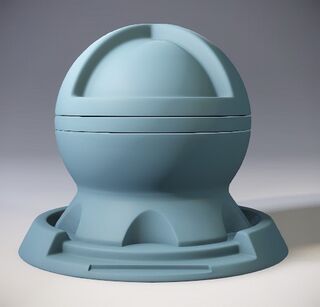
Hi my name is Daniel Kamentsky and I’m an Associate 3D artist at CIG in Santa Monica. You might know me from my time working on TNGS as a part of time shimapan. My role at CIG has recently shifted away from modeling and more towards surfacing.
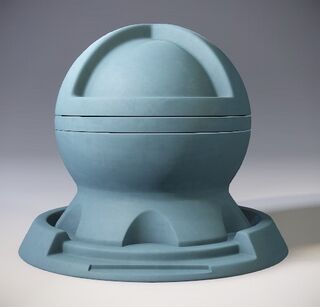
As real time rendering evolves, with new rendering techniques such as PBR (physically based rendering) there is a growing demand for artists that specialize in the creation and application of materials. As one of these artists it’s my job to think about the more micro level of detail while the other ship artist focus on the modeling and large shapes.
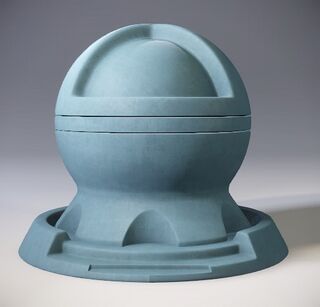
So what does it mean to be a surfacing artist? Well for me it’s about being fascinated with small details and different surface types. Being a surfacing artist requires you to have a deep understanding of the way different materials react to light, how different materials are used in reality, and how to accurately create these materials with in a real time engine.
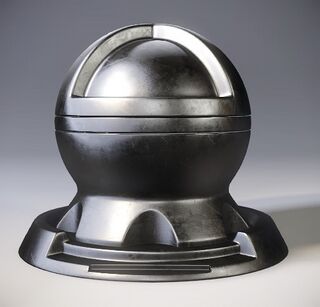
Anyways as an artist I’m better at showing rather than saying (or writing) so let me walk you through my process in creating a material in this set of images. So for this demo I’m going to create a painted metal material. With physically based rendering you are able to create believable materials with simple solid base colors. So with that in mind the first thing I normally do when making my materials is start by blocking in some solid values.
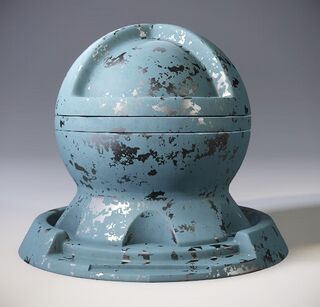
CIG AUSTIN
Hi everyone!
April showers have blessed Central Texas this month and we’ve been hard at work on many fronts. We’ve seen record concurrency numbers with the 1.1.1 game update, and experienced multiplayer connectivity issues as a result. We mobilized all resources to focus on this issue, and you’ll see more detail on these activities from several teams in the detailed reports. We’ve got a lot to share, so please check out some detailed info from the teams in the Austin studio!
Persistent Universe Team:
Art
The month of April saw many developments within the Art Department of CIG Austin. We hosted an Environment Mini-Summit where our friends from Foundry 42, BHVR, and Illfonic came to visit to discuss long term planning for Star Citizen Environments. There are a lot of cross-studio dependencies that require face-to-face time to discuss in more depth, and it is very valuable to interact with people in person that we work with on a daily basis across the world. All in all the Summit was a success, and our Global Environment Leads Ian Leyland and Cort Soest have helped establish a firm foundation upon which to build the best environments possible. Our focus specifically for the PU this year will be fleshing out the “First 5” planetary landing zones, wrapping up our first batch of shops that will be found on those landing zones, and R&D on creating modular space stations that will serve a variety of functions in the PU.
Our character team has been solely focused on supporting the FPS character revisions this month. There was a lot of work to do to help bring these characters up to speed with the rest of the amazing work Illfonic has been doing to make Star Marine look the best it can. We’ve added armor plating to help beef up the Medium Marine a bit more, tweaked materials and colors to help both the Marines and Outlaws look like they belong to the same unit, and Josh Coons even jumped over from the Ship Team for a while to help bring the Outlaw helmets up to the next level. These characters are looking fantastic, and we’re really excited for you guys to get to run around with them very SOON!
Other things the Art Team has been up to this month include concept work for Hangar weapon racks and Holo-Kiosks for the Astro Armada shop, concept work on shielding and radiators for space stations, explorations into Blue Collar clothing sets, flickering job board VFX for the TDD shop, and texturing work for the mobiGlas asset.
Our Animation Team has been supporting various aspects of the project, including prone weapon sets for FPS, and Grabby Hands animations for testing out picking up and putting down objects. Lead Animator Bryan Brewer has been testing and debugging the brand new skeleton we are going to be moving our characters over to in order to improve various aspects of the character’s proportions and range of motion. Our entire animation team is now transitioning over to helping retarget our whole library of animations (over 2,000!) to this new skeleton.
Design
There were many discussions and meetings that took place this month amongst our designers in order to break down what we are calling the “Game Loop” for our upcoming Social Module release. Where does a player start when he/she logs in? What do they experience as they participate in various activities around a landing zone? What happens when they interact with REDACTED??? All very important questions that ultimately helped shape the design for Shopping, Storage, NPC setup, and more. We’ll continue to break these down even further as we progress into next month.
Pete Mackay has been adding extensive developments to his newly dubbed “Ship Cruncher” tool (formerly Thruster Calculator). It’s a pretty robust tool that allows designers to balance discrete item parameters, create baseline ship items for each item type, properly size ship gear and visualize granular changes on a macro scale, and collect robust data sets for each ship. The Ship Cruncher also does several different physics calculations to determine how fast a ship can change direction, its top speed, its turn radius, etc. It’s an all-inclusive package that will significantly help with ship balancing in the future.
Evan Manning has been adding data to the Star Map to be used by our friends at Turbulent for the release of the Star Map on the Platform side. There is a lot of information to be documented and Evan has been doing a great job of ensuring every element in each system is in its proper place.
Work continues on fleshing out various occupations within the Persistent Universe. Tony Zurovec continues to whittle away at the details of the Pioneer occupation, and Rob Reininger and Nate Blaisdell have taken cracks at initial passes on the Mercenary/Escort and Bounty Hunter occupations, respectively. Before long we’ll have more detailed breakdowns of how each of these occupations will work in the PU.
Engineering
April was a busy month for our engineering team, as many of them were recruited to support the live patch that went out the first week of the month.
Our Server Team paused their work on the Multiplayer Hangars feature in order to work closely with DevOps and QA to improve and strengthen our Instance Manager, our Matchmaking Service and other services. As a result, we have had a dramatic decrease in reports of issues related to inability to load into multiplayer matches. Congrats to our hardworking team for this splendid accomplishment!
We have other, longer term systems in the works that continue to progress closer towards completion. These systems are being worked on out of Austin with strong cross-over with Manchester and Denver (by our friends at Wyrmbyte)…such as: Unique Global Entity ID system, Generic Instance Manager, Player Info Server, Presence Server, Universe Simulator, HUB Server, and Player Persistence. Much of this work is slated to have deliverables of first iterations in the month of May…the team is definitely making some solid progress!
The team has also been working with tools such as RAD Telemetry to help them profile our server metrics, in order to support the ongoing task of optimizing server performance. They have started profiling our live builds and analyzing the results with fine toothed combs to identify areas to focus on to implement improvements.
Work also continues on our various tools systems, including support for such items as the Sandbox Editor, Trackview and our Asset Validation Tool. And development continues to progress quickly on our various AI Editors…such as our Useable Editor and our Character Archetype Editor…which are needed by our design team to help bring our worlds to life.
And while juggling all of these tasks the team has also been busy working on such things as finalizing 64-bit networking support for our Large World system, finalizing work on the iPredictor (movement prediction) system, creating a series of prototypes for the Mining Occupation, and helping support other systems that are live or in the works, such as REC and Multi-Seat Ships.
Finally, behind the scenes our team has been hard at work re-optimizing our development stream workflow, which will help us streamline our development to ultimately be more efficient and stable. Everyone is looking forward to this new workflow, which has been rolling out step-by-step over the past several weeks.
Well, that’s it in a nutshell for the month on April, 2015! We’ll be back with more next month!
Live Operations
QA
For the month of April QA has been busy on multiple fronts. With the release of 1.1.1, our concurrency rose to a level we had not seen before. This exposed aspects of our back-end infrastructure that were preventing successful connections to multiplayer matches. QA worked closely with DevOps and our server engineers in a full investigation. After multiple hot-fixes to our servers, the issues were dramatically improved. Subsequently a call was made for everyone to help participate in a scheduled stress test. The turnout was such that we were able to surpass our previous concurrency record and were happy to see our back-end system could handle this increased load.
Melissa Estrada has been assisting our developers in the Frankfurt studio to track down and regress editor issues they’ve encountered when doing comparison testing of our version of the editor to pure CryEngine SDK. Melissa also headed up an initiative to log all errors found in the game logs which will be a huge help in ensuring we have a cleaner game for the release of Star Marine. The team assisted our Global Environmental Tech Lead Cort Soest to filter unused maps in the editor to reduce internal build space by more than 100GB helping to enhance work efficiency.
Our checklists have been updated to include more Star Marine and Squadron 42 features as well as deeper checks to the editor. With help from Jeffrey Pease, efforts have been made to improve the patch notes creation process which help to more easily incorporate multiple members of the QA team that can assist in the event that someone is absent.
Miles Lee has made significant progress in developing test automation. As a result, we are able to automate the capturing of performance data for each of our various builds. He is also working on automating our build sanity checks and assisting DevOps with the development of a headless client system that will enable us to automate stress tests on our back-end infrastructure.
The team was also continually testing Star Marine. FPS specialists Tyler Witkin and his UK counterpart Glenn Kneal ensured production was notified of all issues found that day and highlighted any severe outstanding issues that were blocking or significantly hindering testing.
Our QA team was also fortunate enough to visit Professor Paul Toprac and his aspiring game developers participating in the Capstone GAMMA program at the University of Texas. We had a lot of fun playtesting and providing feedback on their projects.
Next month we plan to incorporate Social Module in our regular testing. We will be working very closely with Jake Ross to ensure we begin testing each aspect of the Module as soon as it is available.
Game Support
The month of April was quite busy for everyone, including Game Support!
We’re continuing to learn and refine our processes of communicating and working with players, particularly on the Live Service Notification forums and on Reddit. We’ve seen nothing but appreciation from players for these efforts, which means we’re doing something right! Our goal of serving live players with information is carried out by giving you the most accurate and updated information on the health of the service, what kind of game experience you can expect as a player, and what we’re all doing to make it better (especially on patch days!).
Behind the scenes, we’ve made some changes that will ultimately result in you getting a better, faster response. We’re closely working with Customer Service, Community, and DevOps on a daily basis to make sure that you get the right timely support. We’ve got a good plan and we’re excited to start getting to where you would want us to be as a service provider.
On a more visible level, we’ve also begun the work of running and managing stress tests, and we’ll be involved in many more of these. The rollout of 1.1.1 and increased concurrency resulted in multiplayer instability, and we worked with multiple teams to identify and address the more common issues. To properly test these fixes, we coordinated with the player base in what turned out to be an incredibly successful test which set new concurrency records for Star Citizen. Not only was this helpful, but it was fun!
Lastly, we’ve spent some time internally on creating some plans on what we’re going to need to support future modules, namely the upcoming Star Marine module, which for us basically means supporting an entirely new game! We’ll be excited to roll these plans out in the coming weeks and months as we expand our services to better support the growing community and ever-expanding needs of the Star Citizen universe.
IT/Operations
The IT team has been hard at work improving internal systems, planning for future systems, growing storage, and fine tuning service performance. The term explosive growth is often used when talking about storage and in our case, we’re no different. As our dev teams continue to produce content and collaborate, we need to make the results of their work available to all teams within the company. As storage needs grow in LA for example, we must grow storage in all other studio locations to match so that data can be replicated locally to each team.
Growth of storage space is not the only aspect we’ve been focused on this month. Storage performance can also become an issue when lots of people need access to the same things at the same time. We’ve already surpassed the capability of standard replication methods and found it necessary to build our own in order to keep up with demand. I’m proud to say that the IT team has come up with some very creative and innovative strategies to make better use of existing systems and believe me, we push hardware to the limits here at Cloud Imperium Games.
For example, one of our replication systems pushes about 900 mb/s for about 12 hours each day pushing content to 5 replication targets simultaneously. It is important for this data to get to each studio as quickly as possible so the performance demand on the servers is pretty high. To solve this problem we’ve built a custom flash storage system in in order to provide the IOPS we need for this process. Each upgrade seems to expose new areas we can improve on. In this example we got our replication going so fast that it began to bog down servers on the receiving end so we’ve been upgrading those servers where necessary as well.
While the IT team has been continuing to provide support to individual developers around the world it seems like storage and replication tuning have been our main focus this month. Next month we’re looking forward to building even better systems to help the dev teams crank out content even faster.
Dev Ops
April was a month of firefighting and stability improvements! We launched patch 1.1.1 and worked to fix stability issues with our Instance Manager, Party, and Matchmaking services. After two weeks of deploying hotfixes from our Server Engineering team, stability increased. Due to some of the stability issues we have had over the last few patch releases, CIG has decided to change our approach to Operational Deployments. What this means to the players is that they should not expect Friday patch releases, or releases late at night. Instead we will be aiming for a more tempered roll out of patches and hotfixes to our live environment, taking full advantage of our PTU environment for config and game testing. We hope this will lead to more stable releases for our players.
The DevOps team has also been hard at work building the base infrastructure for the live environment, PTU, and internal test environments. Work on the new launcher and patcher continues, and we am sure you all will be as excited to use it as we are. We will be demo’ing it very soon with an upcoming PTU test and getting feedback and usability testing on it. Work on our automated dynamic infrastructure scaling system continues, around 40% of this system is already deployed live, and we expect the rest to begin operating over the next month. Internally, we continue to re-build our build server, change how we merge code and data between working branches, build better crash reporting, and work on automated testing.
There is still a lot of work to do to rework our internal data pipeline to get it to the point that both CIG developers and players do not have to patch and move around massive amounts of data each time there are minor changes. The DevOps team is working on a large roadmap to fix this with help from our engineering and tech art teams in Austin and Germany while being supported by our IT staff on the hardware build out. A full completion of this plan will take many months to roll out, but should drastically reduce the time it takes for a game build to be generated, the time for developers to test their changes, the size of patches, and the amount of data developers need to grab each morning. More on this plan in the months to come.
FOUNDRY 42
Animation
The UK animation team has expanded in to a group of five ready to tackle and implement the ongoing Imaginarium shoot as it comes in. As well as being on hand for any block out animations needed here at Foundry 42 we’ve been doing some of the back end work to get the databases and tracking in place that are necessary to keep on top of a project as large and ambitious as Squadron 42.
Engineering
There are a couple of big ticket items coming to their first major milestones for the end of April. Firstly you will hopefully have your first taste of the new tutorial mode in Arena Commander. This has proved to be much more of an undertaking than originally planned, mainly because of just how deep our control systems go and then the complexity of trying to show the player how everything works. Sometimes when you are so close to a project you don’t always appreciate the bigger picture and realise just quite how much we’ve accomplished. We know most people internally who have played through the tutorial (including some of the QA team) have learnt something new about the game!
Secondly we’ve been doing a lot of work in the last few months converting all the game’s “entity Ids” from a 32 bit number to a 64 bit number. The entity Id is a unique identifier for each “thing” in the game, which can be stored and referenced very quickly, and for a computer is much more natural way of accessing items than something more human readable like a name string for example. For a normal single player game, and standalone multiplayer games, 32 bits is plenty (it gives you about 4 billion possibilities) but for an MMO game it proves to be woefully inadequate. The plan is that everything in the universe will have its own unique Id or a “global entity Id” as we’re now calling it, so every item in every database and on every server can be accessed via its own identifier. So as you traverse your way across the universe in your ship, with your particular loadout, with your cargo stored, and a couple of hitchhikers, and are hopping from one system to the next, it makes it much more straightforward technically to transfer all of that information from the server your currently on and onto the next, seamlessly. The fundamental change is actually a fairly simple one, the knock-ons where the code was assuming all these Ids would be 32 bits required a huge amount of fixing and is what takes the majority of the time. This process looks like it is now coming to an end much to the relief of the engineer in charge.
Going into May our gameplay engineers are really focusing in on our charge for the S42 vertical slice, many mechanics of which are now in the polish stage. This is the time where you start to see parts of the project really come together, you see a game instead of a collection of bits. Exciting times!
Audio
This past April for CIG Audio was mainly us keeping busy continuing our work in moving to Wwise. We’re really digging in now; assets are all across, banks created, bussing hierarchy etc. is built, and it’s giving us an opportunity now to refactor and improve while tying things together with Cryengine as much as we can. It’s a big push as Cryengine has only relatively recently begun supporting Wwise and there’ll still be a lot for us to do ourselves on that side, as we progress this year. We’re very much looking forward to releasing with it, but we’ve got plans beyond the standard tools associated with Wwise, for example automated Foley and footsteps that are driven systematically. It’s possible to spend so much time labouring over these, it’s a complete no-brainer to attempt to go the auto route with them.
We obtained some great new tools from Nugen Audio, one of which is going to be key in maintaining a good consistent loudness normalisation level for dialogue particularly, hugely useful.
As we mentioned last month, we’ve welcomed two new Sound Designers: Darren Lambourne, and Matteo Cerquone. Darren’s joined us from Ninja Theory where he worked on some amazing sounding titles. Matteo has joined as a junior, having come through the ranks at Vancouver Film School who turn out same excellent game sound designers.
Finally, we’ve welcomed a Dialogue Specialist, Bob Rissolo. Bob is straight into the deep end with a live-action shoot, helping to record great dialogue performances and ensuring we maintain the quality we need there. He’ll be moving from the US to join us at Foundry 42 which will be a real change for him and hopefully one that proves fruitful.
Luke and Pedro have been really hard at work on the Tutorial this month, which we hope you’ll enjoy from a sonic aspect, it’s highly evocative stuff in many ways!
Phil has kept on plugging away at the social module, along with Tom who’s been putting in great groundwork on S42 too.
Stefan has kept pushing on with FPS work – our Foley session at Pinewood was great, gave us an excellent kicking-off point for the different armour types. We’re still going to keep improving it through recording our own Foley assets as well, however. Can’t stop tweaking! He’s continuing the work on the guns which is a sophisticated system in its own right, getting one’s head around the HDR system is a tough first job but he’s definitely getting there. We still have more environmental aspects of the weapons audio to record though, there’s going to be a lot of audio data devoted to weapons in this game, that’s for sure.
Thanks for listening!
Art
Wow – April just flew by, we squeezed another birthday in while managing to keep all the plates spinning for Sq42 :) Good progress is being made on the Vanduul fleet, ships and shape language, patina paintovers, turret design, its an ever growing pandoras box of tasks. We’ve also spent a lot of time and effort on the FPS weapons needed for the campaign, this includes attachments (scopes, grips, rail systems) and also grenades, while also planning on making the existing weapons PBR correct. We’ve also started working with an new UK based concept company to help us solve the growing amount of tasks generated by the Cap ships and level design.
Environments
We’ve been focusing on our Vertical Slice section for Sq42 – this means we take a section of a level and take it up to final art quality. We’ve got some fancy new tech fresh from the rendering department which will enable us to build our modular levels much more cheaply. We’re also starting to make some real progress on how props are going to be done in both Sq42 & the PU, they will basically follow our same master material system which will utilise the same started texture resource as our environments, this will mean that we can dress our levels to a much higher standard. And lastly we’ve been putting the final touches and fixes to the new Tutorial section in Dying Star – we hope you like it. Ian has also taken on the role as Global environment lead and is pushing through the many lessons we’ve learnt to our partner studios who have been helping make what you see today.
Ship Team
This month, the Foundry 42 ship is hard at work preparing a lot of assets for the Cinematic shoot in London. This is an ongoing process, making sure Cinematic Directors and Chris Roberts have everything that they need to shoot all the cinematics for Squadron 42.
The ship team in Manchester is working on multiple capships full force, and we are making really good process. Our goal is to make these massive ships a living and breathing world for the player to explore. The Idris and Javelin and Bengal are all going into final production, to meet the F42 standards! A huge undertaking. The Starfarer production is also making good headway, Matt is systematically working through the whole ship ,a big project, his second project after the Gladiator. We are also working on a Xi’an Cargo ship, a ship that is needed in SQ42.
Characters
We’ve been concentrating heavily on the mocap/Pcap shoot, the camera rig is now in London with Andy and is being put through its paces capturing the actors as they arrive for the shoot – cant wait to see a digital version of (redacted). All in all exciting stuff!
BHVR
Hey all!
First off, we’d like to say that it’s fantastic to be able to report to you our progress on the BDSSEtm every month. In our book, being able to interact directly with the community is the number one perk of open development.
Here’s what the BHVR team has been up to in April. Some of you asked us for the loooong version, so here it is:
Pushing towards the social module’s first release, we’re focused mainly, but not solely, on supporting and polishing the shopping experience. Planetside locations are going to be rich in adventure, encounters and interactions, but before we get to present to you the fancier game scenarios and mechanics, we are focused on the essentials, so let’s start with those:
When you’ll finally get to exit your hangar on foot and make your way up to planetside, we want you to have a good time visiting the various shops and markets available. Take a moment to familiarise yourself with these names if you haven’t already: Astro-Armada is a high-class ship dealer, Casaba-Outlet is a clothing and apparel franchise, Cubby-blast is a shop unique to ArcCorp-Area18 which will answer all of your personal weaponry needs, Dumper’s Depot is a scrap metal shop where you’ll find ship parts (in perfect condition for now), and last but not least the medical-unit offers medical services for that special moment when you get shotgunned in the face.
The shopping experience effort is on various fronts: On the design side, our level designers are putting together the physical and logical components needed in the levels: racks, shelves, items on shelves, the shops themselves, etc., as well as supporting our artists who are making these locations’ visuals gorgeous and reusable. Game Designers are synchronizing everyone’s work to fit the concepts and coming up with realistic solutions to epic problems that obviously come along the way (like … every five minutes).
Our UI team has been all over the place! They created some cool logos this month for “Interdimension Software“, “Electronic Access” as well as a “Star Marine” logo animation, along with decals for the Nyx planetside location. The mobiGlas and its Augmented Reality (AR), which are the main gateways into the shopping interface, are being enhanced with various visual components and other features such as reworked notifications for lobby, shops and hangars. We are not able to have the full polished set of features just yet, but giving it to you in its current state is very exciting. We’re looking forward to reading your feedback on its usability and visuals.
All of this is extremely exciting to us as we’ve written, discussed and iterated on these designs for a long time (centuries in spacecrab-time) and we’re finally seeing it all come together. Note that this first release is far from the final shopping experience we’re striving for. It is what we call “Phase one” as in “Set phasers to one”.
In other news, other Planetside locations are still being developed. Mariana, Odyssa, Crusader and Hurston Designs have passed from 2D level layouts to the whitebox stage. If you recall, we’ve stated in previous reports that we would get faster and faster in the development of Planetsides thanks to the Tag, Room and Tier systems. The four planets mentioned fit under the same Architectural style as ArcCorp, making them great candidates to prove that we can build them efficiently. So far so good! You can dig up more info and concepts about these Planets; it’s available on this very site.
As mentioned above, our little army of artists has spent a good amount of time ‘arting-up’ the various shopping locations, but also working on an all new modular set to be used in future planetside locations. For this new set, we’ve integrated a better pipeline that makes our work more efficient and with better visual results. We can’t wait to show you those results!
You’ve probably seen mock-ups of the holotable revamp. We are continuing the effort on this side as well. The visuals are still being defined while our engineers are making slight tweaks and fixes. To preserve its functionality for the soon to be released modes, we cannot dive in the full revamp just yet. You’ll understand that before making it better we’ll need to break it. Of course we don’t want you to end up with a broken holotable. For now you’ll see tweaks such as better visual cues for the REC equipment versus owned equipment.
Somewhat related to the holotable, but also affecting various systems throughout the game, we have made some progress on the holo-object refactor to reduce entity usage. In a nutshell, this means better performance which directly translates to more players in multiplayer instances!
Our engineers are also hard at work supporting the FPS access, the loadout customization in the lobby and the multi-crew lobby implementation. On top of that, the chat feature has been updated to support basic features and private conversations. These aren’t accessible to you yet but they’ll come in handy when we finally roll out the multiplayer hangars, which our guys are actively working on.
We also had a very fruitful day-long meeting with Turbulent where both of our teams joined forces for skyLine, the Starmap. We can’t say much about this feature just yet except that it’ll be super awesome, promise! We can’t wait to use it!
As usual, we prepared some cool Flair Objects for the subscribers and for past stretch goals. Hope you liked our little April’s Fools prank; we’ve heard that it actually made the game FPS much better ;). The Khartu-Al Takuetsu starship model has been given, and we’d like to thank the community for reporting and helping us find an insidious error that prevented it from appearing in hangars. (Don’t tell anyone, but we’re working on a special extra something for the 23million stretch goal reward…which was also a Khartu-Al).
Next month’s flair will be the first of a new series. The Puglisi collection items are especially nice pieces. They have strong visuals and also have a great fiction around them (thanks to Haddock for that!).
Okay, we’re running out of coffee and are very low on “space ink”tm, so until next time, have fun in the ‘verse!
ILLFONIC
Ahoy Star Citizens! It’s been another busy month for the FPS team. Over the past few weeks we’ve been focused on getting the feel of movement and gun-play really dialed in, along with implementing zero g locomotion and interactions. Read below for the details…
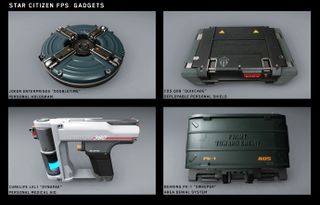
Engineering
The engineering team spent a lot of time and effort making sure all of the variables and parameters that designers were requesting were available to them for tweaking. This doesn’t just include player speed and weapon damage, but also things like breathe duration based on stamina from sprinting and how that affects aim on each of the weapons. They can now tweak how long a breath is, the pause at the top and bottom of a breath, how far that will throw off the player’s aim, etc… This allows the designers to fine tune everything to get all the weapons feeling exactly how they want in every situation. In addition, the stock CryEngine hint system was rewritten. The hint system is what was used to provide recoil and inaccuracy when continually firing a weapon. The general consensus was that the stock system didn’t provide enough control, so one of our engineers rewrote it from scratch to give tons of control over which direction the gun will recoil and what the limits are for up and down movement. Again, this is something that will give designers a much finer level of control in tuning the weapons moving forward.
Another big task that has been going on is network optimization. There was quite a bit of traffic being passed from the client to the server and vice versa that just didn’t need to be there… so a few of the guys here have been profiling all of the network traffic and stripping out what isn’t necessary and restructuring what is there to be much more efficient in terms of data size. It’s gotten much, much better over the last few weeks and there is still more that can be optimized. In the end, this will mean less lag and a much smoother experience for you Citizens! We know you understand how important it is to have as little network lag as possible, especially when playing a shooter!
Art
The art team has been focused on polishing ALL of the current weapons in the game, mostly making sure the materials are all up to Star Citizen standards (and you know how high that bar is!). A full lighting pass was also completed on the Gold Horizon space station level. The Astro Arena level that you saw at PAX East has undergone a complete rework on the art side to give it more depth and bring some more contrast in as a whole. Polish work on the VFX for all of the weapons is ongoing. We also want to make sure that the weapon effects in FPS are lining up with those used in ships. Similar technologies should have similar effects, even if the scale has been reduced. Lastly, work started on taking all of the Gold Horizon set pieces and making them conform to the standard tier set system so they can be used in any persistent universe locations.
Design
The design team was mostly focused on tweaking the feel of movement and gun-play over the last few weeks. Now that they have all of the parameters needed exposed to them, they have been dialing in breathing, aiming down sights and recoil. Work also continued on a new map and game mode. The new mode will focus on some asymmetrical gameplay, which we are all very excited about! All of the modes that are being worked on for the FPS module are there to simulate actual scenarios that players could run into in the persistent universe. Things like infiltrating a held location quietly, possibly stealing cargo, or just running protection. With the open nature of the game and how many options the player will have in Star Citizen it’s hard to imagine every possible case, but we think we have a solid handful of situations that you might run into.
Animation
The animation team has been busy creating new assets for Sata Ball. There are quite a few unique animations to that mode for interacting with the ball, mostly having to do with passing and shooting the ball around the arena. The new mocap data will also be rolling in shortly, at which point the animators will start hooking up all of those new animations. The largest bit of work here is going to be the movement transitions and jukes. These animations make the characters lean into and out of sprinting, running and walking states and gives a good sense of weight to the animations overall. The last bit to mention here is re-tweaking the animations that are present in the game for aiming, shooting, reloading and swapping weapons. After the designers are happy with the timing and feel on all of those elements, it’s up to animation to get everything synced back up again.
We know you are all really excited for the release of the FPS, and we are too! We just want to make sure that you get something really special when it drops! So please bear with us, it’s coming very soon and we think it will be worth the wait!
TURBULENT
Here’s what we’ve been up to for the month of April, up here in Montreal.
RSI’s new style

First off, RSI has a new homepage now. It’s been our main focus for the past weeks to release this new design, aiming to deliver more content at a glance, in a more legible layout with minimal unused space. We also spent a lot of time optimizing this new design so that it would be handled better on a wider range of devices and browsers, starting with significantly reducing the homepage’s total size, including the videos.
New pages, like the new Dev Tracker page, will consistently be based on this new layout, and we’ll also continually transition the rest of the existing website to use this format when we add functionalities, like in the new Press page.
The Community Hub
The next big item we’ve been working on is the long-announced Community Hub. As we get further along into its development, here are some of its key features. This new section will be located right at the root of the Community section, and is designed to receive and feature almost exclusively fan content : “Citizen Spotlight” will allow all fans to upload and display their own creations about Star Citizen (including but not restricted to screenshots, play sessions, rigs, cosplay, music, models…), while “Deep Space Radar” will aggregate all external contents that fans can find about Star Citizen outside of Roberts Space Industries. Among other things, the Hub will also feature registered Star Citizen streamers and fan podcasts.
This new section implies a sizeable new architecture to be able to handle that much content, and we have been finalizing its visual and technical design throughout this last month. We have since started implementing the data models and static visual integration, and are moving on to data handling.
We really want a page the community can “own” with it’s own content.
New tool in the works
A new project is coming up, in size on par with the Community Hub, that we’ve been internally calling the Issue Council. Its baseline is that there is a growing need for a centralized Bug Report system for Star Citizen : a way for the community to build up a database of bugs and issues in all aspects of the game (and the website), regulated by the entire community, and then streamlined to the development teams. With this system, players will be able to report issues, have them confirmed (or contested) by other players, and follow the eventual fix in the game. This new module has been in concept for a while now, and we have started implementation.
Starmap
Starmap work continues. Much progress done on the back end to ensure that the architecture of the universe updates will work for the many different components that will need them, the web Starmap being only one of those. Most of the heavy front end work this month was focused on developing the asset pipeline to bring interesting assets to our (pun) “Astrometrics room”. Having generic shapes and iconography is important for this type of app but having actual good looking models and/or texture and animation will be important to properly represent the SC Universe. This pipeline is specific to WebGL as we have now officially moved off the Unity prototype we demo’ed back in December/January.
This visual language must also be common with the game and so many design meetings with all of the teams involved were needed. There is still alot of work left!
Content and updates
April came with its own concept sale, and the Hull Series is currently heavily featured on our brand new homepage. With it, came the rework of the Cargo system which got recently reflected into the Ship Stats, and of top of that update we have also started a conjoint task with the game designers to update some of the most outdated ships in the catalog. First in the list is the Aurora LX, which finally got its beauty renders in the store.
Leaderboards opt-out
The most active players may also notice that it is now possible to opt out of the Arena Commander Leaderboards, directly from your settings page. If you opt-out, we will still keep receiving your game data and calculate your personal; statistics and performance, but they will remain invisible to anyone until you choose to opt back-in again. While invisible, you effectively also “relinquish” your potential public rank.
CCU system
As you know the current CCU system has been outgrown with so many ships now flyable. Design and basic implementation work has been done this month to bring you an alternate way to CCU. May should have more substantial progress on this subsystem. With more ships becoming flyable, this system will be required so that you can properly upgrade your existing Alpha/LTI pledges without sacrificing those precious items.
Ask a Web Dev
Finally we have also stepped up our forum presence this month on the Ask a Dev – Website thread. So if you have questions about us, our process, or upcoming features, ask away and look for the guy with the 1-UP mushroom!
MOON COLLIDER
This was another heavy month of planning out the roadmap of features for Star Citizen. We worked a lot with the Frankfurt, Manchester, and Austin teams in particular to continue identifying common AI needs across different Star Citizen modules and working out how to best minimize duplication of effort and getting all the crucial AI features in place as they’re needed. This is tricky enough when you’re just making a regular game, but with the ambitious scope of Star Citizen, multiple modules and a constant stream of releases, it becomes something that needs to be constantly worked on and tweaked.
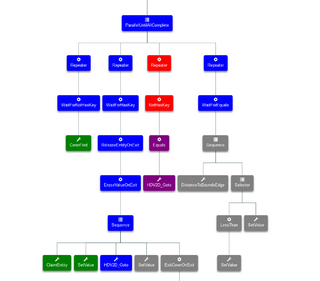
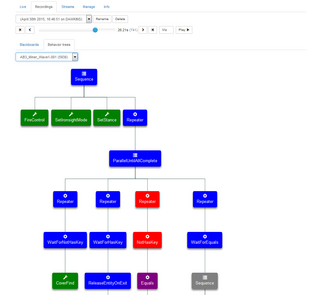
Design
The main design work we did this month was on improving the Kythera AI system to be more multithreaded. Certain aspects of Kythera are already run on separate threads, such as generating navigation meshes, but a lot of aspects such as behavior processing and perception are still run on a single thread. For most games with a small number of active AI this really isn’t a problem, but as we all know, Star Citizen throws normal out the window! To be able to efficiently update hundreds or thousands of AIs, it becomes critical to be able to break up as much processing work as possible into small, independent jobs and run them across multiple threads.
Our work last month on the job system helped set us up to be able to create small tasks as needed, but the figuring out how to safely and efficiently break up things like behavior processing is the hard part. It involves creating a framework that can determine which bits of code are dependent on other bits of code and therefore need to run after them, and which can be run independently. You then need to be able to efficiently schedule all of these. Oh, and it’s also handy to have your framework setup in such a way that it’s hard for programmers using it to accidentally create dependencies that shouldn’t be there and mess all of the scheduling up!
Engineering
We made a nice feature improvement to our Kythera Inspector debugging tool this month, which is the addition of behavior tree visualization for recordings. As we’ve mentioned previously, Inspector allows designers to record everything that AI does while they’re playing the game, and then replay it to see exactly what the AI was doing at any point. This is an invaluable tool for tracking down bugs.
One thing that was missing, though, was being able to properly visualize their behaviors. This was something you could do in real time via some on screen debugging, but it wasn’t accessible in a user friendly way from inside the inspector. Now, when we play back recordings we can get a nice view of the behavior tree that any AI is currently running, and what state it’s in. We don’t yet have the ability to see this while the game is running, just on recordings, but that’s something we’ll be adding soon.
Another interesting feature we’ve been working on is a big improvement to our spline joining code. We’ve mentioned previously how we allow designers to create various splines to define attack paths or fancy maneuvers to take ships through tight obstacles that they might otherwise avoid, but one issue we’ve found with this feature is that it can be tricky to get the ship to the start of the spline in a smooth and realistic way.
Often we want the ship to have a specific orientation and velocity when it hits the start of the spline, but we need to get the ship there from whatever its current orientation and velocity are, in a way that is within that ship’s maneuvering capabilities, and without forcing it to slow down any more than absolutely necessary.
Our existing solution did a reasonable job most of the time, but would sometimes give bad results, so we decided to figure out how to do it right. This is actually a much trickier problem than you might think. Tricky enough, in fact, that our resident astrophysicist Ben Lowing called in a second astrophysicist, and the two of them worked out a detailed solution to the problem. It’s now been mostly implemented, though there have turned out to be some extra subtleties to the problem that we will continue to address next month.
COMMUNITY
Greetings, Citizens! Community Manager Jared “Disco Lando” Huckaby here in fantastic Southern California, where the sun always shines and the taxes always debilitate. Yeah, it’s me. I can barely believe it myself. Let’s jump right in, shall we?
Our Community Content Manager Jenny Varner relocated and joined us from her native land of Texas. While she’s struggling to adapt to our local customs, and continues to insist that breakfast tacos are superior to burritos, she’s finding her place amongst the family here at Cloud Imperium Games. In addition to managing all our social content, she’s also hard at work producing video segments for Around the Verse, running our weekly livestream Reverse the Verse, and laying the groundwork of our extended support for community content creators.
For myself, I joined the team this month after years in YouTube exile. As Community Manager, my focus will be in improving the connections between you Citizens and our development team on the forums. While we have an unparalleled level of access between the fans and our team when we account for four weekly video broadcasts, weekly comm-links, and the variety of additional posts, we can always strive to do better, and that’s our goal. In addition to that, I’ve been editing Around the Verse for the last two months, trying to bring a little of our team’s personality to the forefront. We’re not the standard video game company, and we’re not interested in putting out the standard video game company community content.
That leads us to our biggest milestone as a Community Team this month, Around the Verse #42. I don’t have to tell you the significance of that number to everyone on this team. Each week we do our best to bring you the information we have available to share, and to present it in the best fashion we can. As with everything else we do, we’ll continue to do our best to improve our efforts each and every week, and with this milestone, I created a special Hitchhiker’s Guide to the Galaxy themed intro to the show with the help of Ryan Archer, and Star Citizen Angry Peas. Thanks Peas.
And as always, none of this is possible without me our subscribers, who’s contributions make these productions possible. I know we say that every month, but this is the first time I get to say it, and I’ve seen firsthand this month the level of dedication and hard work the folks on this team put into serving the community. It’s our collective hope, that the recent additions to the team combined with the established regulars who’ve been here for so long will allow us to reach more of you, and more effectively, than ever before.
Ben is telling me that I have to stop talking, now. I’m going to keep typing for as long as he let
// END TRANSMISSION



